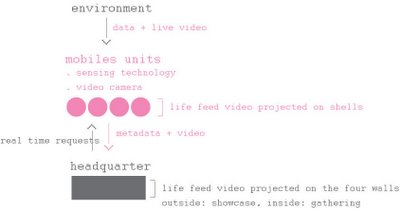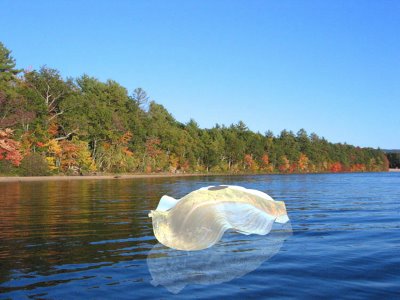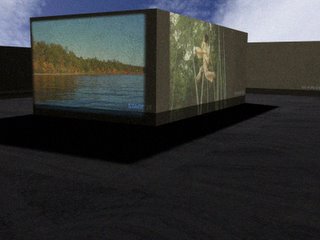If you’re new here, you may want to subscribe to my RSS feed to receive the latest Architectradure’s articles in your reader or via email. Thanks for visiting!
A new input device for video capturing and editing! Designed for young children, ages five and up, it allows them to craft compelling movies through the motion analysis of their interaction with toys.

A child playing with Picture This and his Naruto action figure
Continuing my research on perspective taking and tangible video editing, I recently finished the development of Picture This, a video editing and capturing device designed for young children. It allows them to craft compelling movies through the motion analysis of their interaction with toys. Children’s favorite props alternate between characters and cameramen in a film. As children play with the toys to act out a story, they conduct algorithmic film assembly.
Picture This’s web site.
In my prior work, Moving Pictures, I wanted to offer children the opportunity to gather imagery from their environment in the form of short video clips captured on video camera platforms modified for the application. I wanted to provide a transparent experience for the user, in which the cumbersome process of capturing and editing becomes fluid in the improvisation of a story and accessible as a way to create a final movie.
Web site for my past work on Moving Pictures.
Tangible interfaces combine operations on physical objects with digital data. I have sought to develop interfaces where either digital data can be overlaid onto physical objects in a display space or physical objects can act as handles into the digital space. The tangible handle is more than a marker or place-holder for digital data. It has the power to materialize and redefine our conception of space and content during the creative process.
If the toy had a visual perspective immediately accessible to the child, a new world would be opened to her. The toy could potentially bring the child into exploring visual and narrative perspectives of these character props, expanding her discovery and understanding of social interrelationships.
A video snippet of Picture This and a 6 minutes video for its interaction design.
The Picture this tool is an audiovisual device that combines two digital video cameras and two accelerometers. The tool captures motions, video and sound in real-time while an algorithmic video editing system composes a movie from these inputs. A motion based editing engine fluidly assembles the film as its story is being narrated, while respecting the conventions of continuity editing, namely, a sequence of shots that appear to be continuous.
This style of film editing is made possible in Picture This by detecting turn taking behaviors between the toys. Two toy props are augmented with video cameras and custom accelerometer hardware. They use the Picture This tool both as a doll hand-bag or a doll audiovisual recorder. The tool is flexible for a child to take the perspective of props she selected for her movie.
Also my portfolio for selected projects is finally online!










